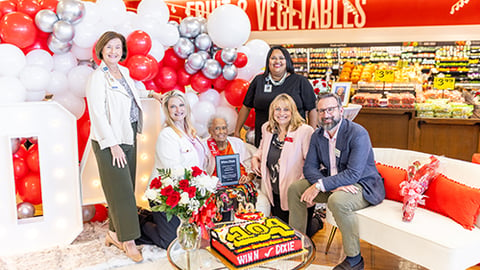EXCLUSIVE: Inside the Amazon Access Program
It’s been just over a year since Amazon launched Amazon Access, a portal that makes it easier for shoppers to find and save money on products, including groceries. One of the goals of the program was to improve food equity, by enabling those who receive Supplemental Nutrition Assistance Program (SNAP), Medicaid or other forms of qualifying government assistance to buy groceries in a convenient digital way.
The launch of the online hub came at a key time, while food inflation was spiking and around the time that emergency COVID-era SNAP payments were set to lapse. Now, with the food-centric holiday season approaching, Progressive Grocer talked with Nancy Dalton, head of community experience and customer marketing for Amazon Access, about what the offering means for consumers – and what it has personally meant for her.
[Read more: “EXCLUSIVE: Chicago Entrepreneur Brings Food Justice to Life”]
As Dalton pointed out, the option of using SNAP EBT online payments and signing up for the discounted Prime Access membership program gives shoppers the opportunity to nourish themselves and their families in a way that meets their needs and lifestyles. “The last few years have been really tough for consumers, in terms of being able to able to access the food they need to feed their family and contending with a high level of inflation as well,” she said. “Food is community, and when you are struggling to pay your bills and living paycheck to paycheck, you are worried about how you can provide everything on the table.”
Amazon Access, Dalton noted, lives up to its name. “There is a growing population of people have historically been locked out of being able to use their benefits online. Amazon Access provides one centralized location for low-income Americans to find programs and discounts that make shopping on Amazon easier and more affordable,” she explained. “What we want to do is break down barriers for low-income consumers so they can access food more readily and feel a sense of convenience equity.”
Breaking down barriers is part of Amazon’s ethos from a corporate responsibility standpoint, according to Dalton. “We understand our success brings broad responsibility, and that’s something we hold dear. We want to leverage our capabilities in technology and logistics to expand our reach and impact in communities that need it most,” she noted.
Big-Picture Benefits
In addition to straightforward food access, with the ability to order and pay for groceries online with a desired delivery window, people can benefit from this form of e-commerce in other ways. “I also think there is a piece around the stigma that can be felt when you are using the benefit in a brick-and-mortar store. People may feel concerned that others are looking at them or that they are holding up a line. Being online has leveled the playing field,” Dalton observed.
Family relationships can be enhanced with this type of grocery shopping, too. “Low-income Americans are often working multiple jobs trying to feed their families, and this maximizes their time,” she added.
On a broader level, online SNAP payment for groceries bought on Amazon.com, Amazon Fresh or at Amazon-owned Whole Foods has led to tighter community ties. “We found that in healthy food priority areas, people were unaware that online SNAP was something they could take advantage of, so we needed to come to communities and hear what their experiences were. We collaborate with a lot of community-based organizations to get the word out about Amazon SNAP,” Dalton said, adding, “The grassroots aspect of it is so important because that’s where people learn what resources are available.”
A Personal Connection
For Dalton, the success of the Amazon Access portal has been particularly rewarding. “It’s really personal for me. I grew up with a mother who was a recipient of SNAP at the time. There was no online SNAP – we were using the brown and purple money to get the food we needed. If we didn’t have it, we wouldn’t have eaten. So this is a full-circle moment for me to lead a program to raise awareness and adoption of this online benefit,” she remarked. Her mother would have appreciated the convenience and judgement-free way of shopping online, Dalton added, and they would have also appreciated more time together.
Her role within Amazon and her own experience have made her attuned to the reactions from users of the program. She recounted a woman who approached her at the Amazon booth at a recent cultural event in Los Angeles: “I was able to speak to a customer who came up to our booth and said she recently took advantage of payment with SNAP and how it really changed her life. She said, ‘Not only do we have the ability to get groceries delivered to my door – my daughter and I wait for the driver to come and it’s become a way to have a positive bonding experience.’ I was incredibly humbled by that.”
Such feedback can fuel improvements in Amazon Access features and benefits, Dalton pointed out. “It can help us figure out a way to meet them were they are and often to co-create. If they give us feedback, that gives us the means to developed new products, new services and new experiences. We continue to listen, learn and innovate,” she said.
In addition to her role at Amazon, Dalton serves on the board of directors for Positive Deposits Inc., The Food Research and Action Center and The Food Bank of Delaware. She also sits on the Milken Institute Business Council and is a member of its Food is Medicine task force.
Seattle-based Amazon is No. 2 on The PG 100, Progressive Grocer’s 2023 list of the top food and consumables retailers in North America. PG also named the company one of its Retailers of the Century.






